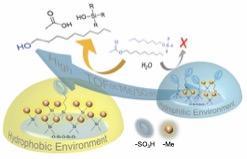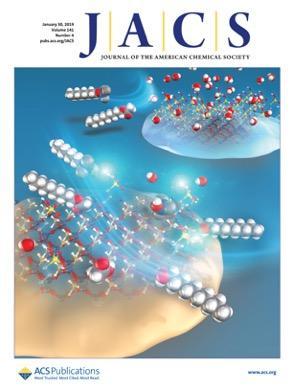Our paper reporting Brønsted acid property of sulfo-functionalized siloxane gels with a variety of surface hydrophobicities was published in Journal of the American Chemical Society (ACS). [Featured on a supplementary journal cover on the journal's website] [Highlighed in EurekAlert!]
「Quantitative Evaluation of the Effect of the Hydrophobicity of the Environment Surrounding Brønsted Acid Sites on Their Catalytic Activity for the Hydrolysis of Organic Molecules」Miura, Hiroki; Kameyama, Shutaro; Komori, Daiki; Shishido, Tetsuya
Journal of the American Chemical Society, 2019, 141, 1393-1796, DOI:10.1021/jacs.8b11471
Sulfo-functionalized siloxane gels with a variety of surface hydrophobicities were fabricated to elucidate the effect of the environment surrounding the Brønsted acid site on their catalytic activity for the hydrolysis of organic molecules. A detailed structural analysis of these siloxane gels by elemental analysis, X-ray photoelectron spectroscopy, Fourier-transformed infrared (FT-IR) and 29Si MAS NMR revealed the formation of gel catalysts with a highly condensed siloxane network, which enabled us to quantitatively evaluate the hydrophobicity of the environment surrounding the catalytically active sulfo-functionality. A sulfo group in a highly hydrophobic environment exhibited excellent catalytic turnover frequency for the hydrolysis of acetate esters with a long alkyl chain, whereas not only conventional solid acid catalysts but also liquid acids showed quite low catalytic activity. Detailed kinetic studies corroborated that the adsorption of oleophilic esters at the Brønsted acid site was facilitated by the surrounding hydrophobic environment, thus significantly promoting hydrolysis under aqueous conditions. Furthermore, sulfo-functionalized siloxane gels with a highly hydrophobic surface showed excellent catalytic activity for the hydrolytic deprotection of silyl ethers.

